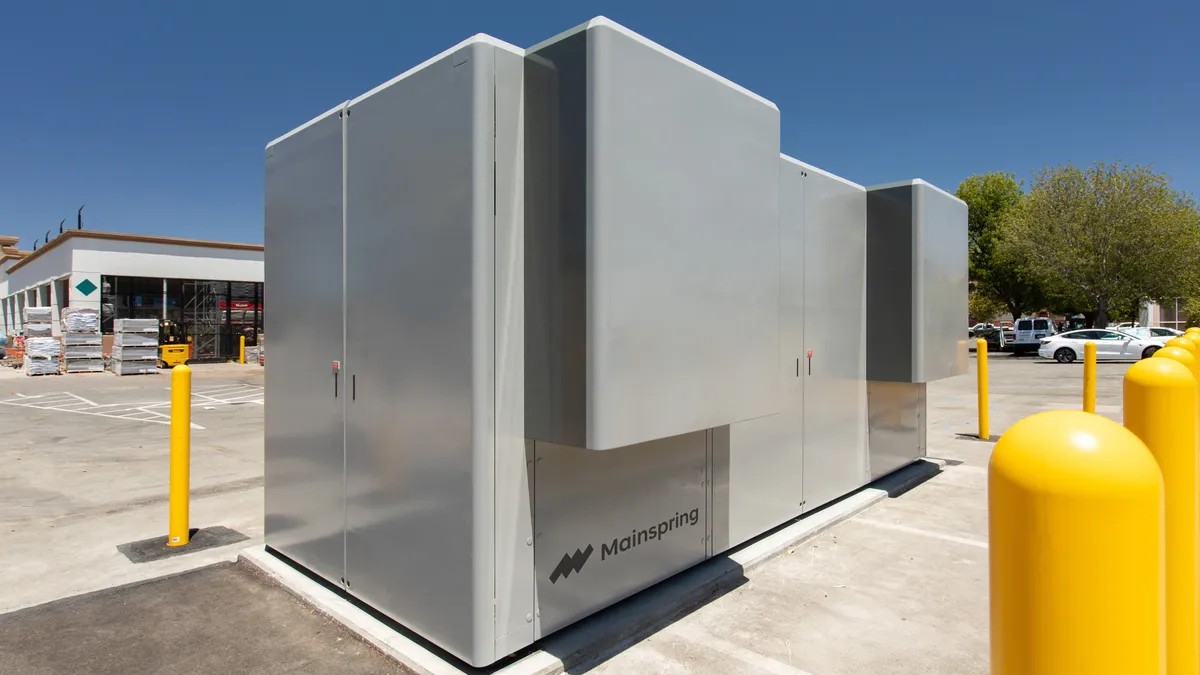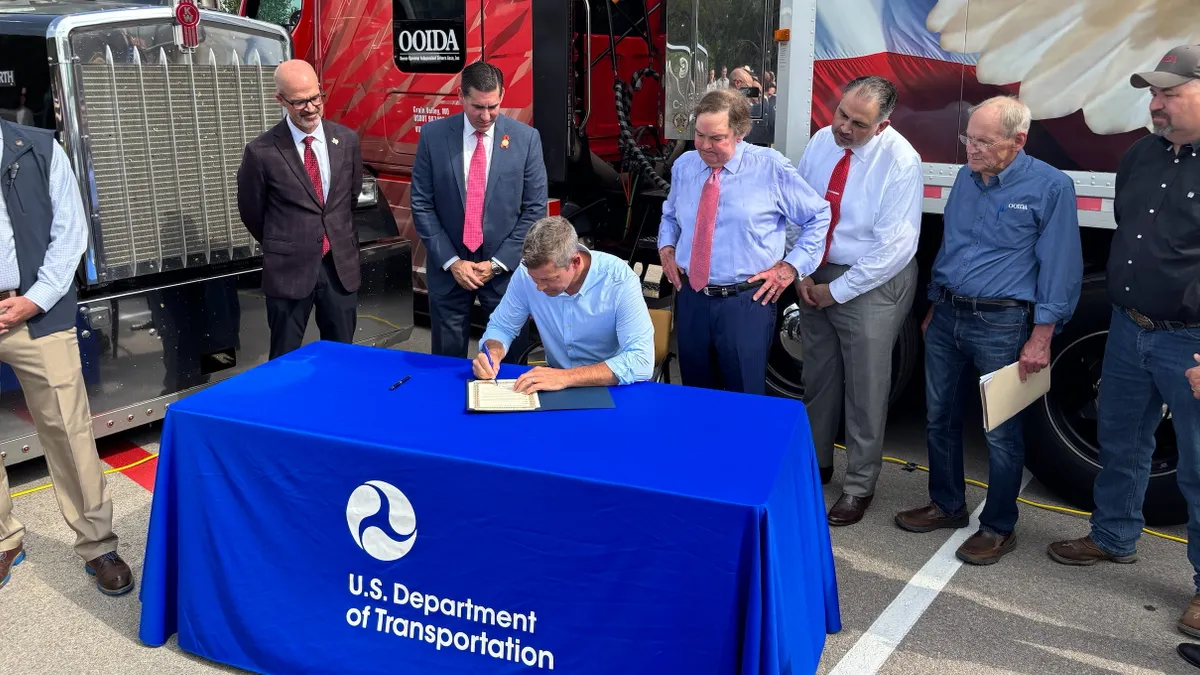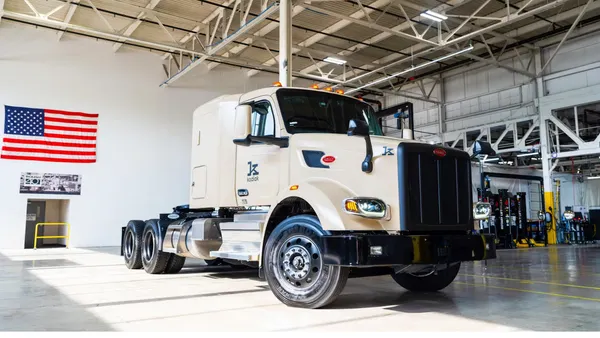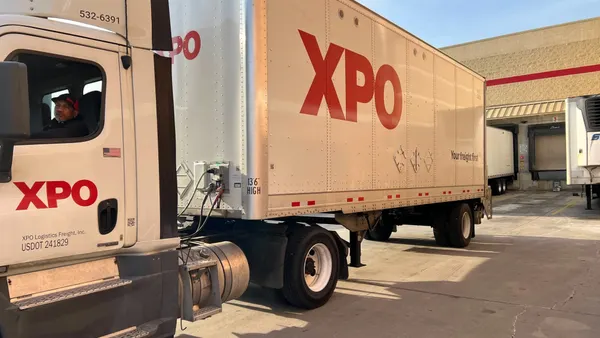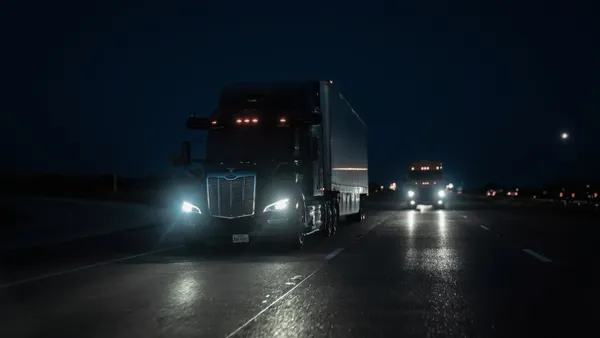Demand for fleet electrification is growing faster than ever, driven by ambitious goals to decarbonize business operations and increase sustainability. One of the biggest challenges EV operators face is the sheer amount of power needed to keep their trucks charged and running 24/7. Where will that power come from, and how long will it take to get it?
Much of it will come from the existing power grid, where developers are already moving to add new capacity to meet the surging requirements. But today’s energy landscape is characterized by significant challenges and complexities.
The Challenges to Grid-Based Fleet Charging
- SPEED: The speed of getting the generating capacity and system upgrades needed to charge an electrified fleet (“speed-to-power”) is one of the top challenges operators face. While needs vary in terms of utility and project location, an EV truck fleet of a reasonable size (more than 2 megawatts) often falls in the multi-year range, if that amount of power can be committed at all. Charging a fleet of 100 class 8 electric trucks requires closer to 10 megawatts. Typical utility planning to accommodate this level of grid expansion requires processing time of about one year or more as well as production time of up to two years or more for the multi-megawatt switchgear required.
Speed-to-power matters because timing is critical for fleet operators to be able to capitalize on the many grants, subsidies, and rebates available on a first-come, first-served basis. It’s also critical as operators in logistics are making capital investments today that will impact their operations for years or decades to come.
- RESILIENCE: Local resilience is essential as critical charging load comes on to the grid, especially given the additional stresses these new loads add to the system. Extreme weather events and grid outages are on the rise, and resilience is ever more important, especially for businesses reliant on fleets moving goods. For most fleet operators, downtime translates into economic loss. Some operators, such as those of emergency response vehicles and other critical infrastructure assets, cannot accept any length of downtime. Indeed, many critical infrastructure assets may be at their highest demand exactly when the grid is down (fire trucks for forest fires, utility bucket trucks for power disaster response, etc.).
Resilience is crucial for predictable fleet EV charging, but it’s also important that it must be sustainable, for companies to meet sustainability goals and increasing government regulations. Absent clean, fuel-flexible power generation that is highly resilient, operators use the default option of dirty diesel generators for grid backup. Some may look to batteries as a mitigation, but batteries cannot economically accommodate multi-day resilience scenarios.
- COST: Most truck fleet operators have been accustomed to fairly predictable fuel costs, many with the use of long-term supply arrangements. Fueling a gas truck at 4pm is no different than fueling it at midnight. This kind of flexibility and freedom carries high value. By contrast, electricity grid cost structures by necessity introduce rate increases and unpredictable spikes. Rate structures are complex, designed to flatten out peaks in demand with incentives and disincentives. This has important benefits for grid management, but for truck fleet managers it significantly reduces the control and predictability of costs and adds planning complications such as timing of fleet charging.
Local Power Generation for EV Fleets: What to Consider?
Commercial businesses and utilities alike are seeking new generation technologies and resources to meet the wave of new power demand and to mitigate these challenges. One of the most promising of these resources for EV fleet charging operations is clean local generation. Local systems typically include a source of primary power such as an engine, microturbine, or other generator, and a combination of ancillary sources that could include grid connection, batteries, and renewable power such as solar arrays. Like any grid alternative, the system must be cost effective in terms of capital expenditures, cost of fuel, and operations and maintenance costs (O&M), all over the asset or demand lifetime.
A New Category of Mobility Power Generation
In 2020, a new type of local power generator called a Linear Generator was introduced that addresses the challenges of grid-based power generation while also delivering unique advantages over other local generation options. Brought to market by Mainspring Energy, the Mainspring Linear Generator offers an unmatched combination of dispatchability, fuel-flexibility, high efficiency, and low cost.
Fuel-flexibility means that the product can directly run and switch among traditional fuels like natural gas and propane as well as highly sustainable renewable and zero-carbon fuels including biogas, hydrogen, and ammonia – all without retrofit. The system’s software and power electronics automatically adjust its levels of compression to seamlessly adapt to new incoming fuels.
The Linear Generator helps to address the biggest challenges to EV fleet charging infrastructure while offering significant advantage over existing local generation options.
- SPEED TO POWER: A Linear Generator-based charging infrastructure can be deployed faster than waiting for grid upgrades and interconnection. Also, the near-zero NOx and low or zero CO2 profile of the technology allows for significantly easier and faster permitting than for other onsite generation technologies. In one example of a nearly 10 MW installation in California, Mainspring will be able to reduce deployment time from 3+ years to just eight months.
- RESILIENCE: Linear Generator technology offers resilience from multiple angles. Its backup capabilities ensure power to run through any outage. The product has run at customer sites through hurricanes, sub-zero snowstorms, excessive heat, and other extreme weather conditions. Its unique fuel flexibility means that when needed, it can seamlessly switch to whichever fuels are available - not only traditional fuels like natural gas and propane but also clean fuels such as green hydrogen and ammonia. Customers can start on their sustainability path today by running biogas on their Linear Generators.
- COST: The unique design of Mainspring Linear Generators delivers significant advantages in total cost of ownership. Considering capital, operating, and fuel costs together is important since generating assets should be expected to run for an extensive period of time, up to 20 years or more. Mainspring’s Linear Generator is made of standard materials and operates without the use of oil, expensive catalysts, or complex engine mechanical systems — resulting in low capital and industry-leading maintenance costs. Where other onsite generation systems require replacement of high-cost components, the simplicity of the Mainspring Linear Generator, characterized by the lack of rotational and high torque movements, drives an industry-leading maintenance cost profile.
The Mainspring Linear Generator delivers a “future-proof” path to power generation. While the dominant sources of fuel for local power generation today may be well understood, today’s investments should allow for flexibility and integration of tomorrow’s fuels as they become available, without having to rip-and-replace or retrofit existing equipment. A single-fuel power generation system exposes investors and operators to significant obsolescence risk and precludes the introduction of more environmentally friendly alternative fuel solutions in the months or years ahead.
To learn more about this innovative EV fleet charging infrastructure solution, visit the Mainspring website at www.mainspringenergy.com.

